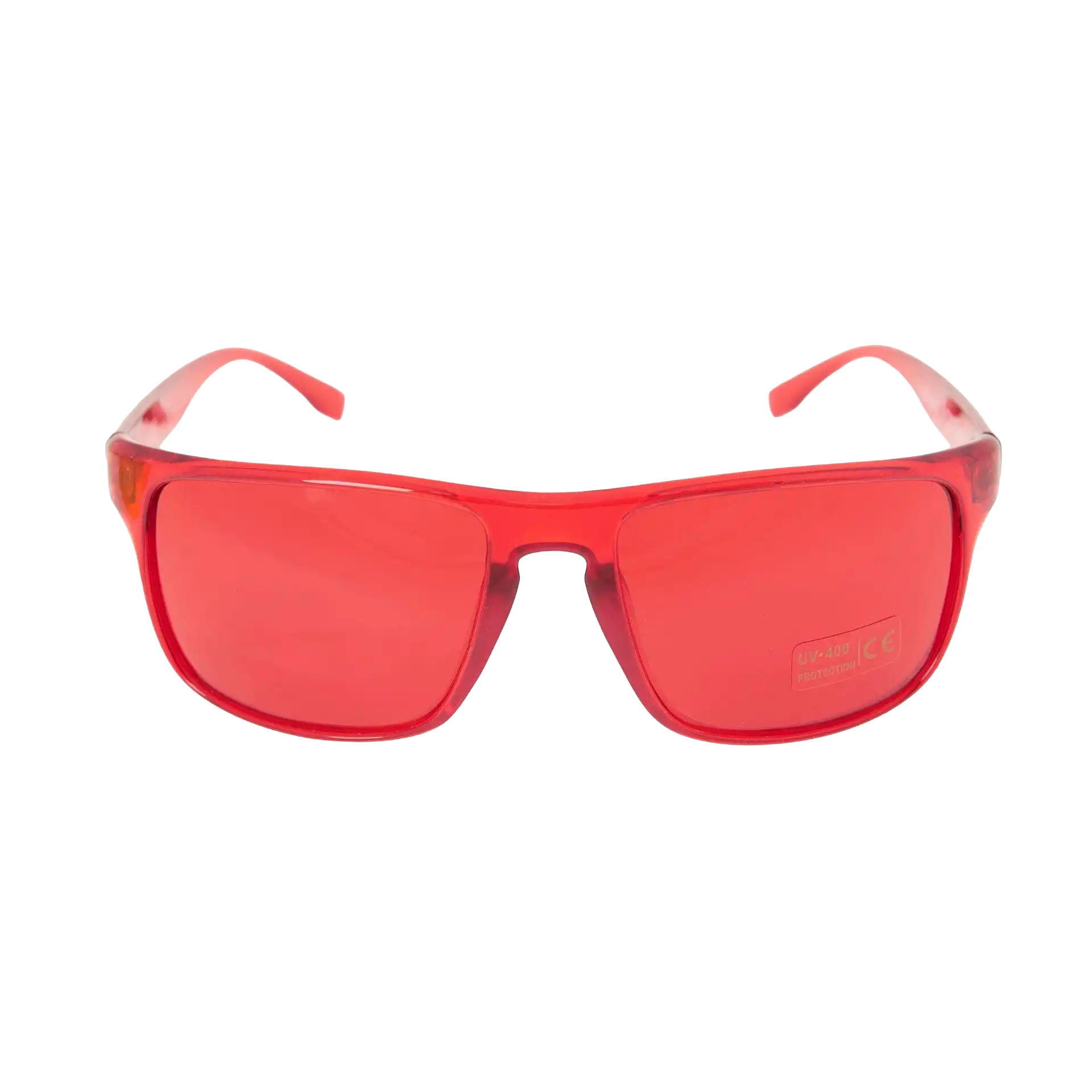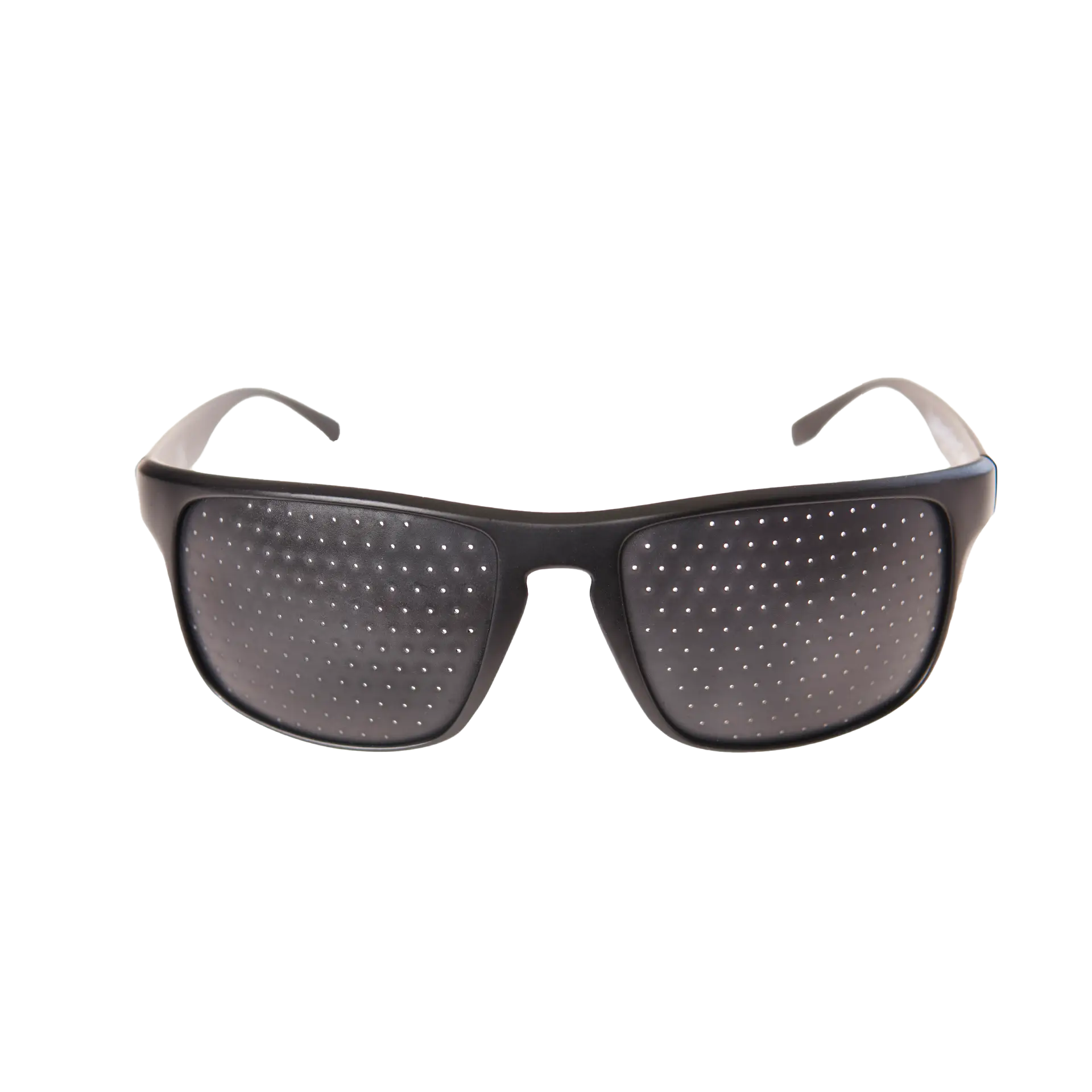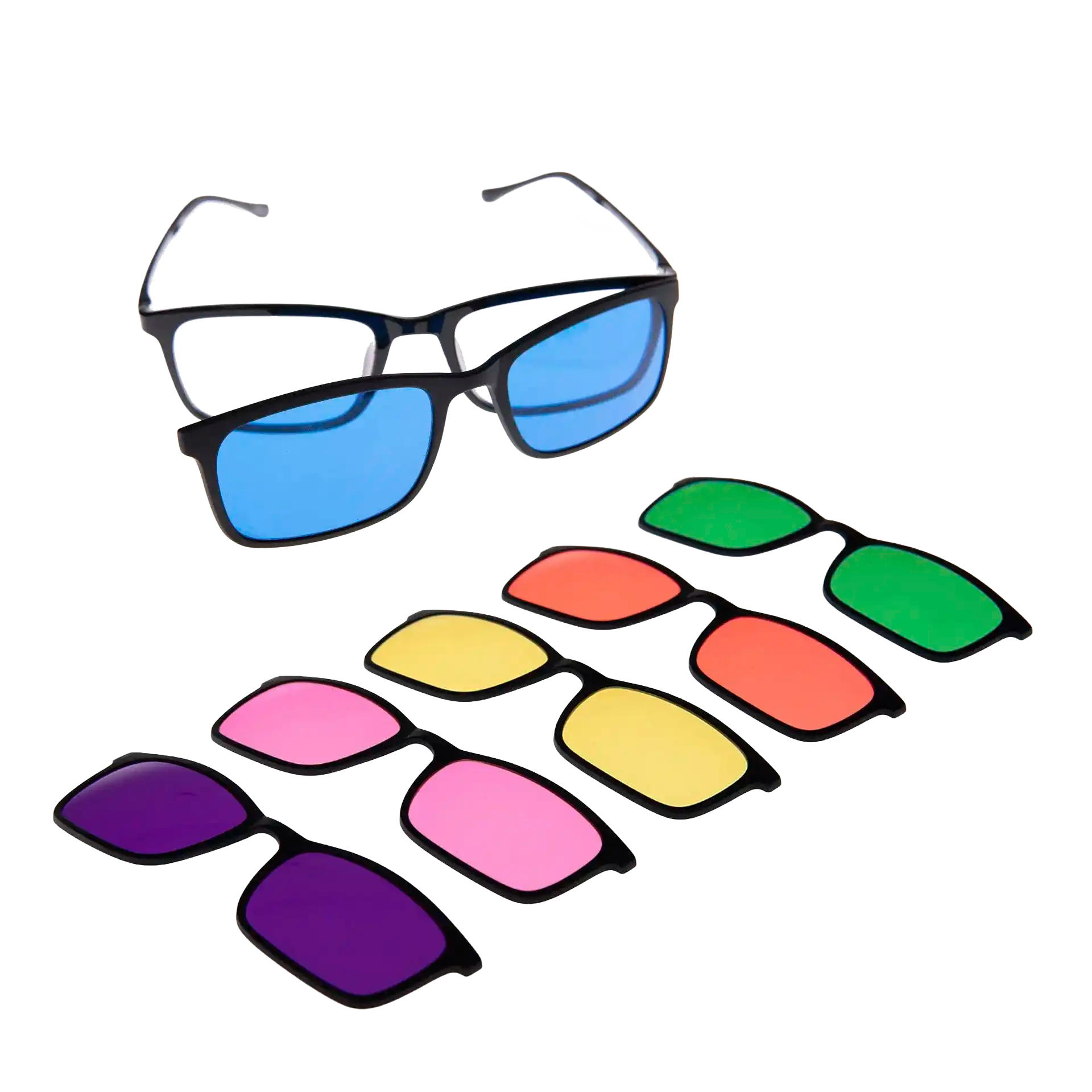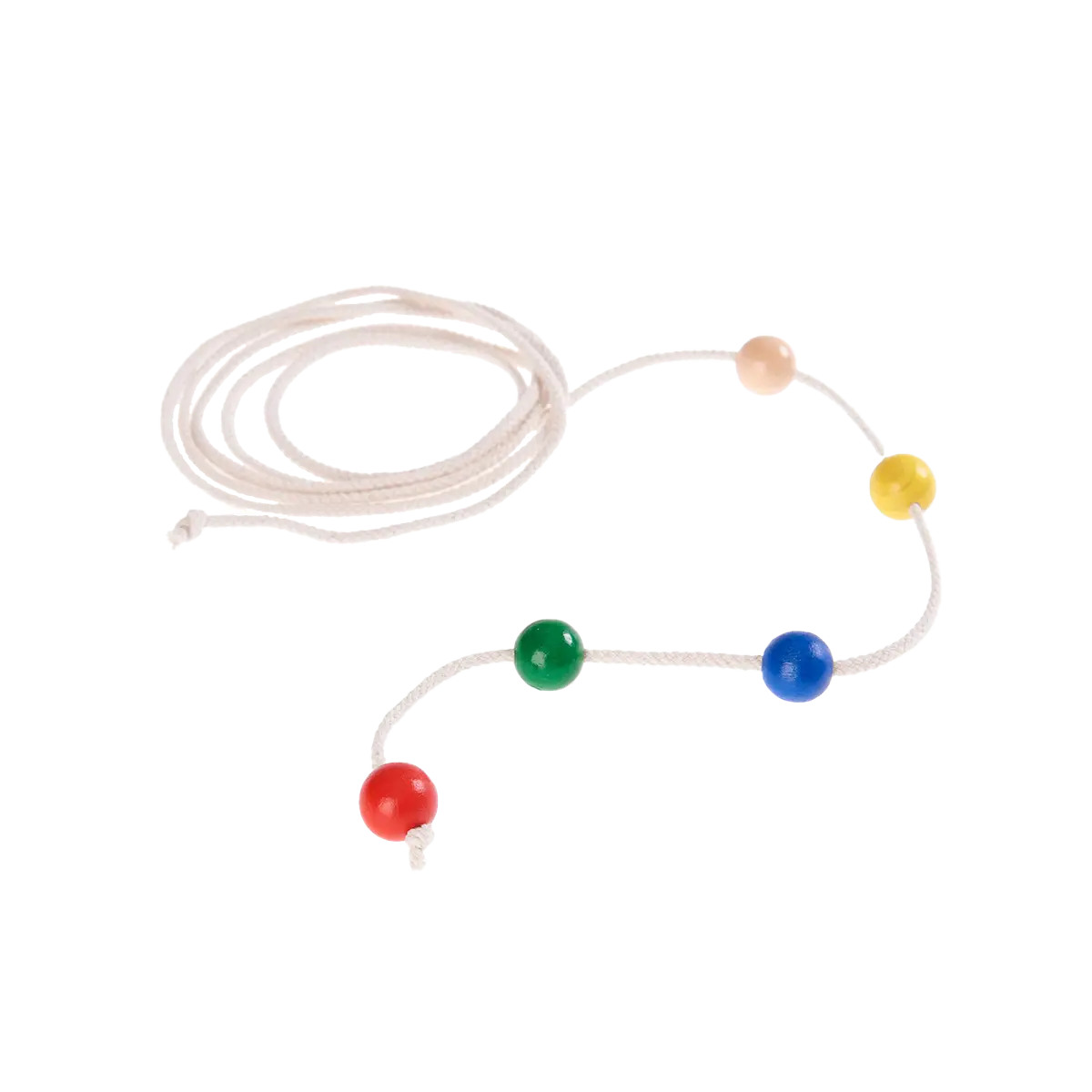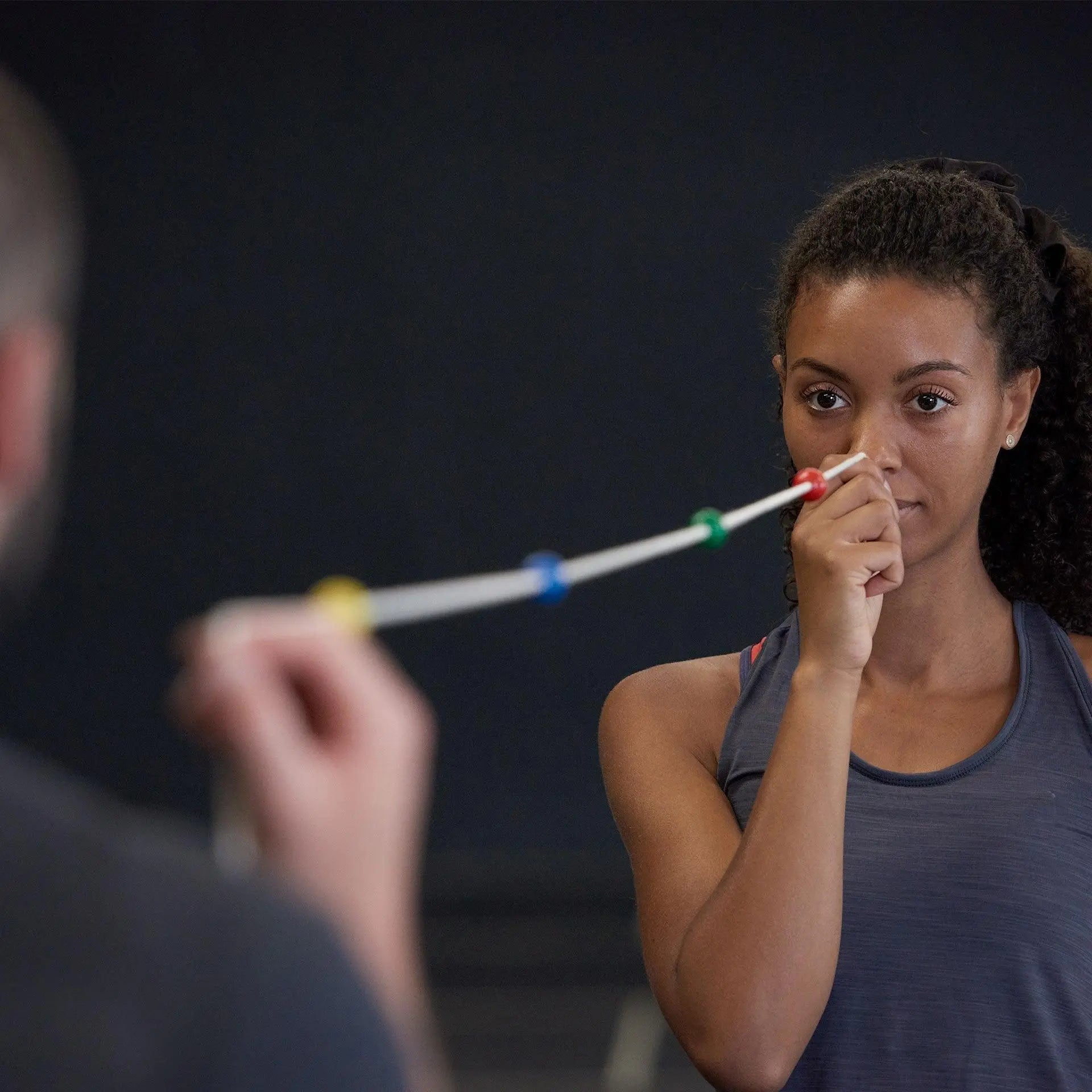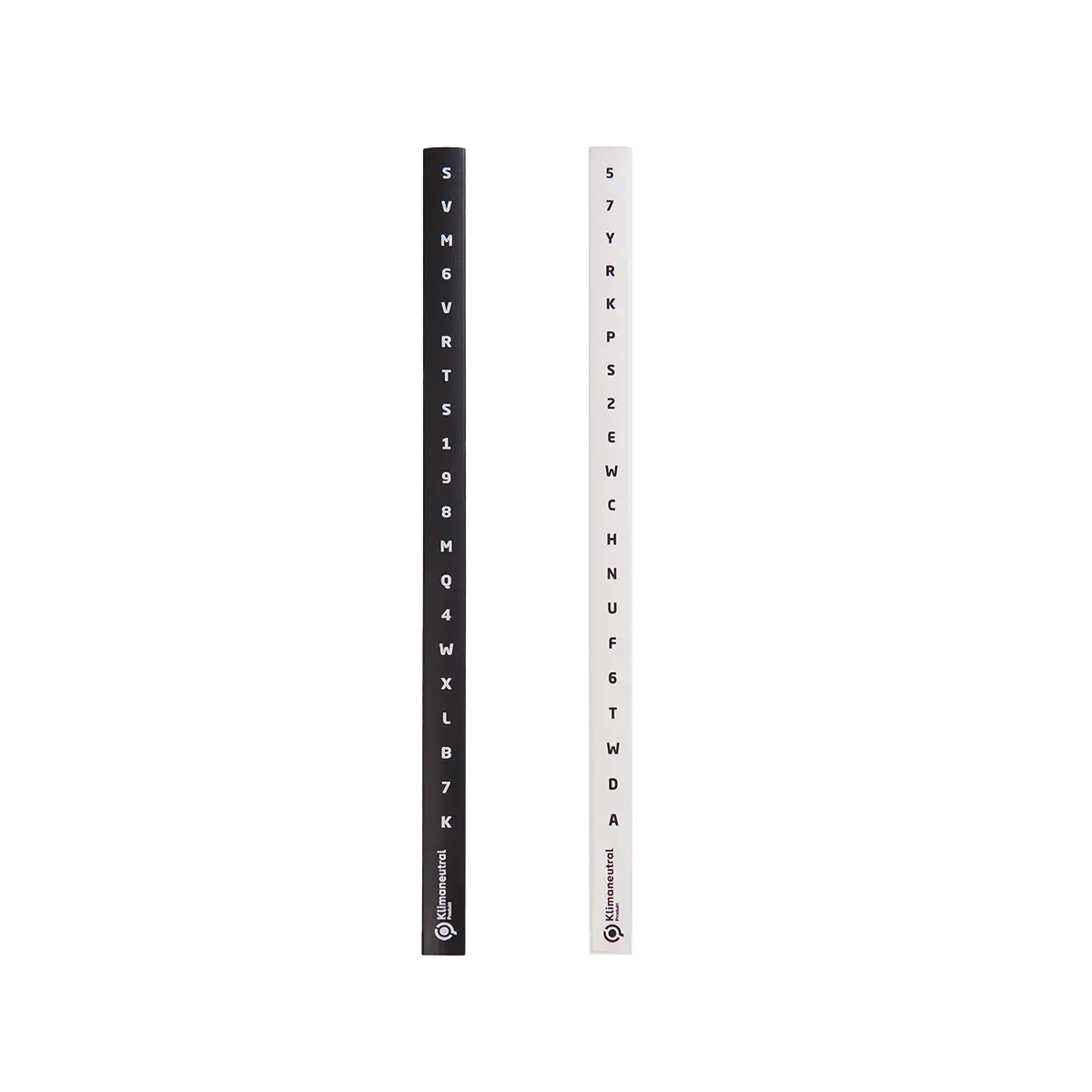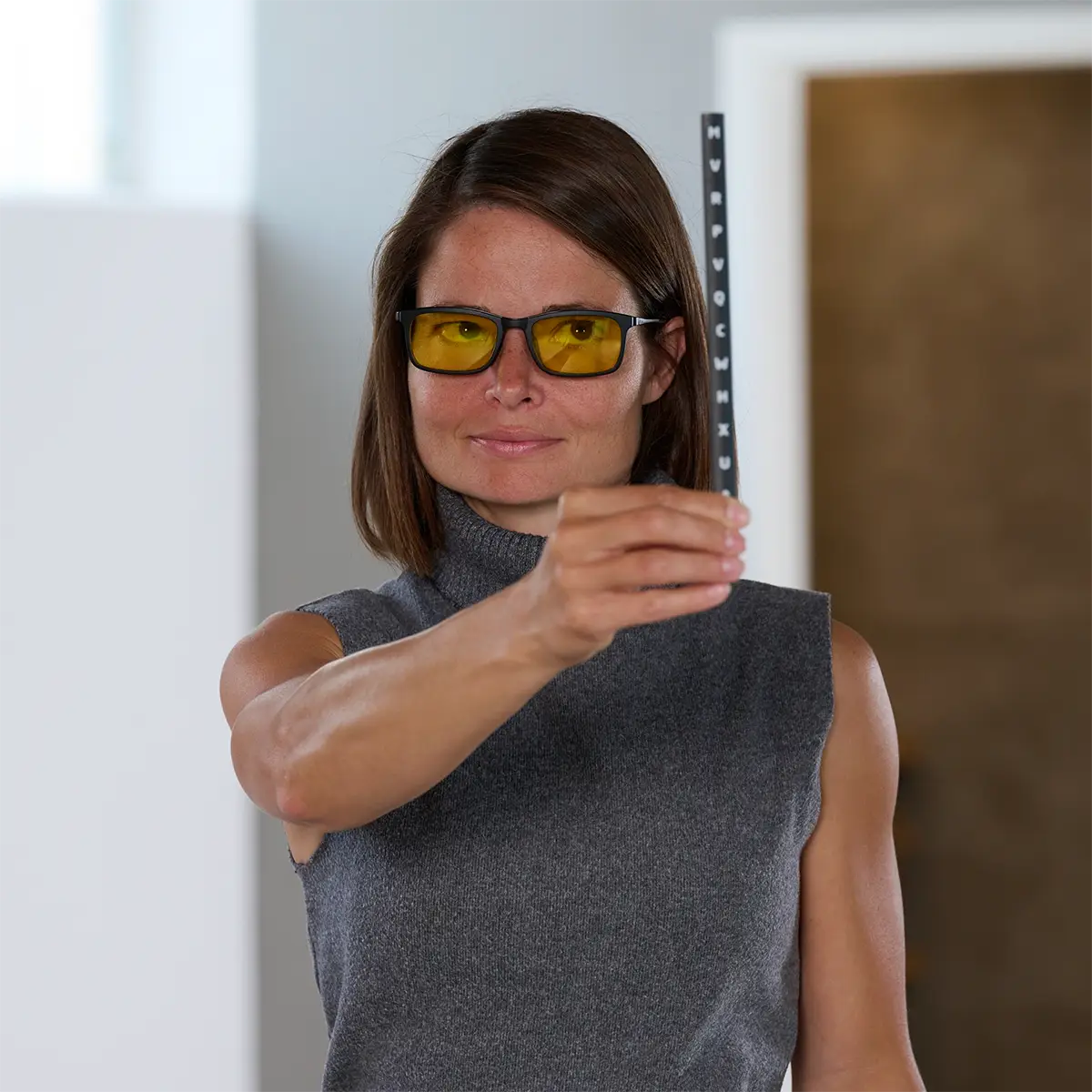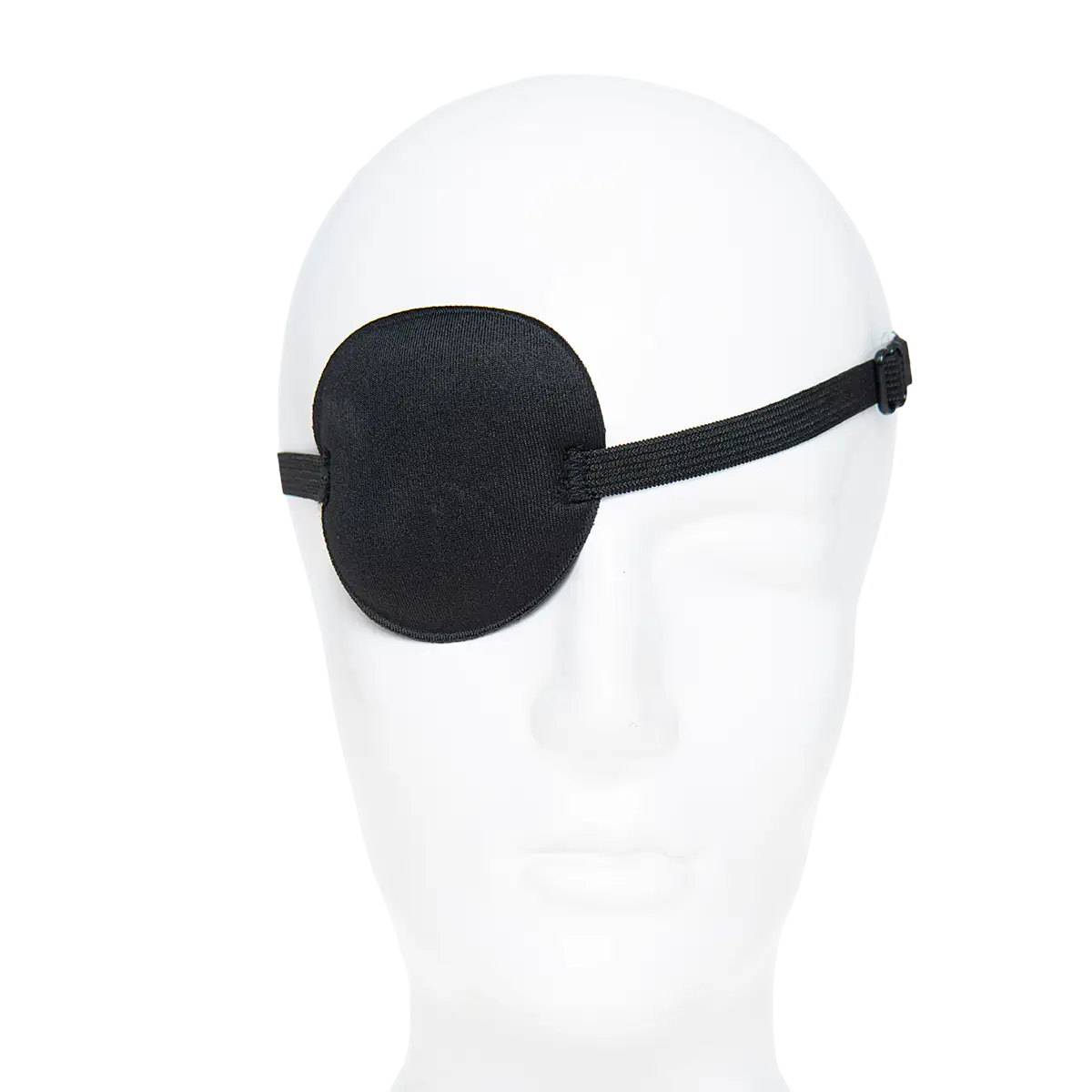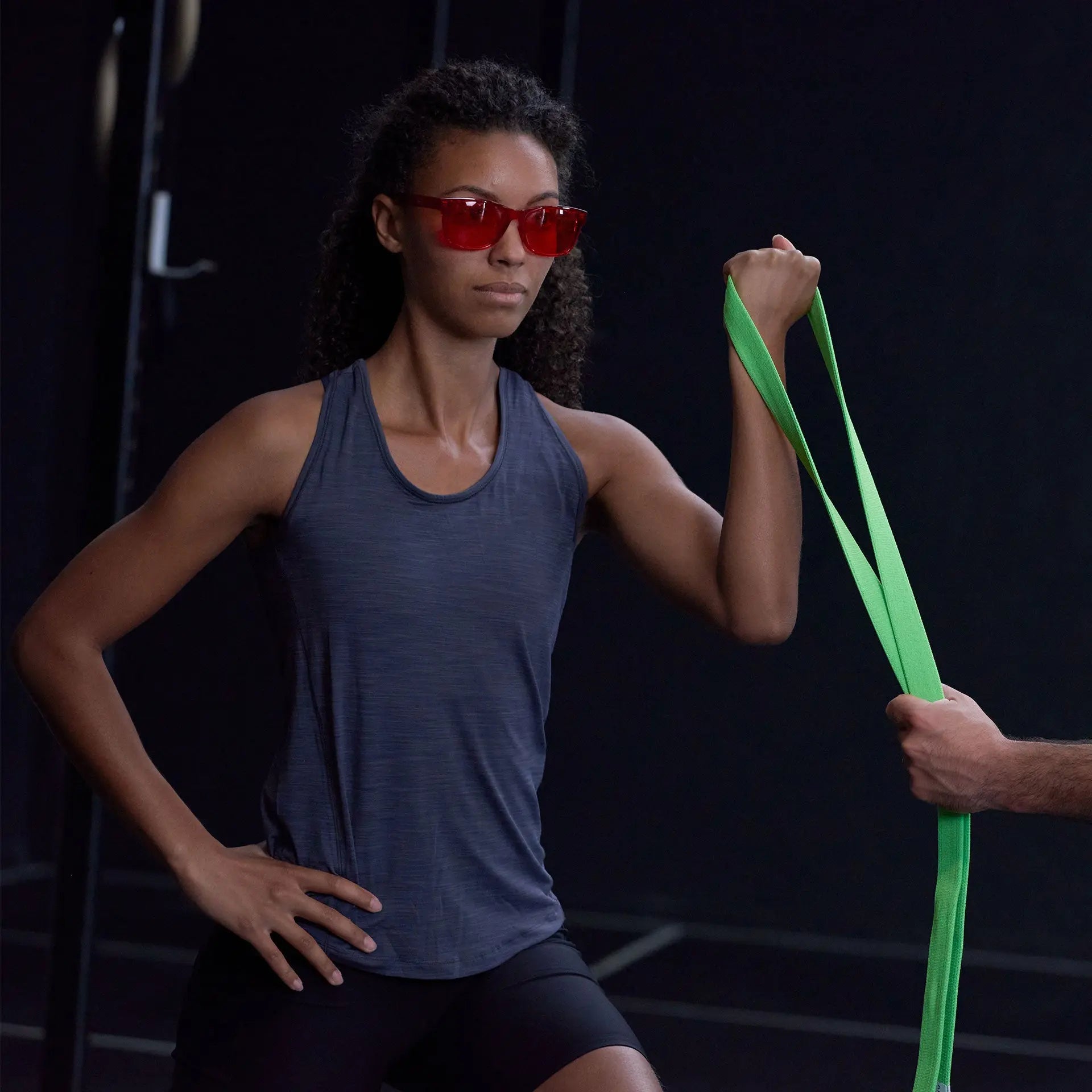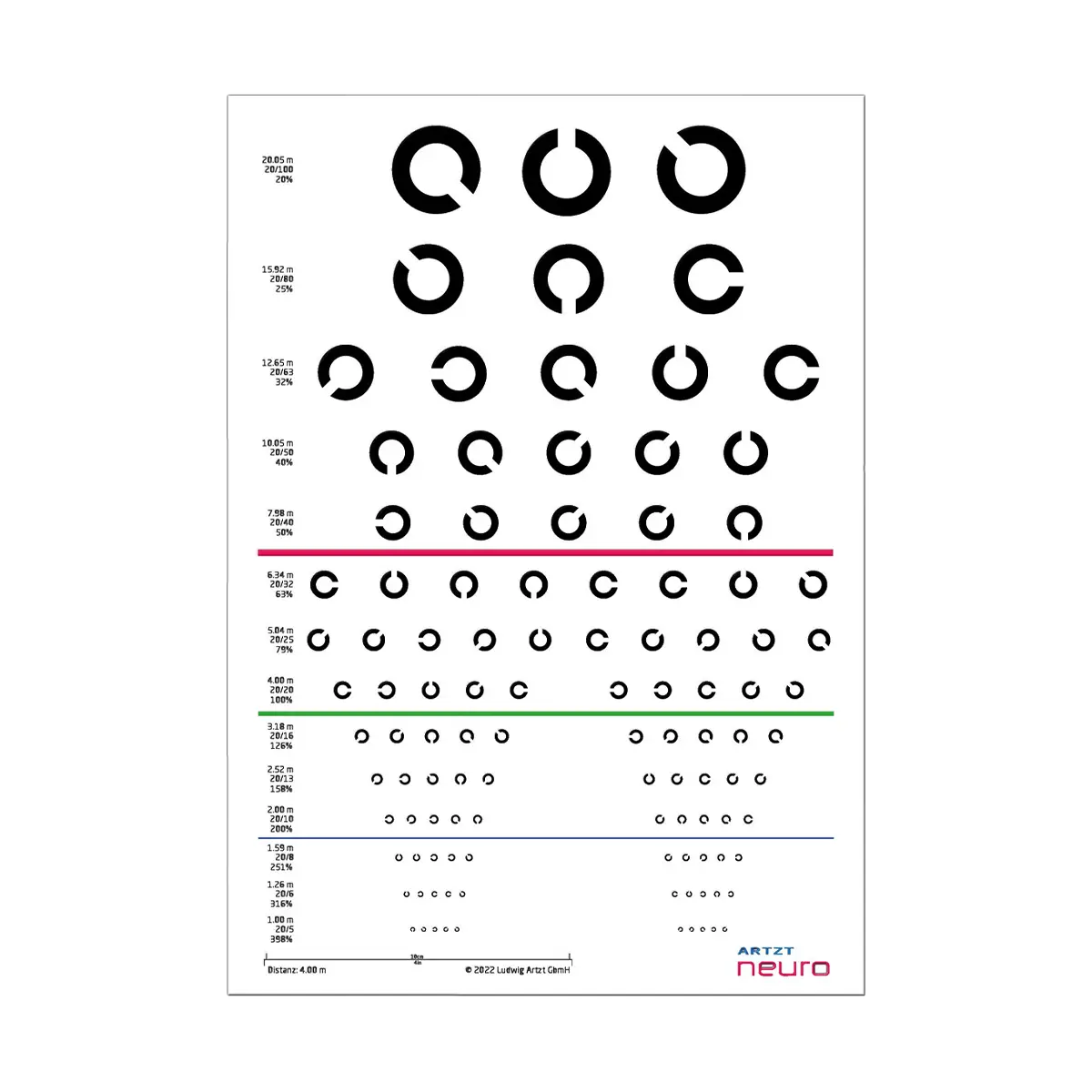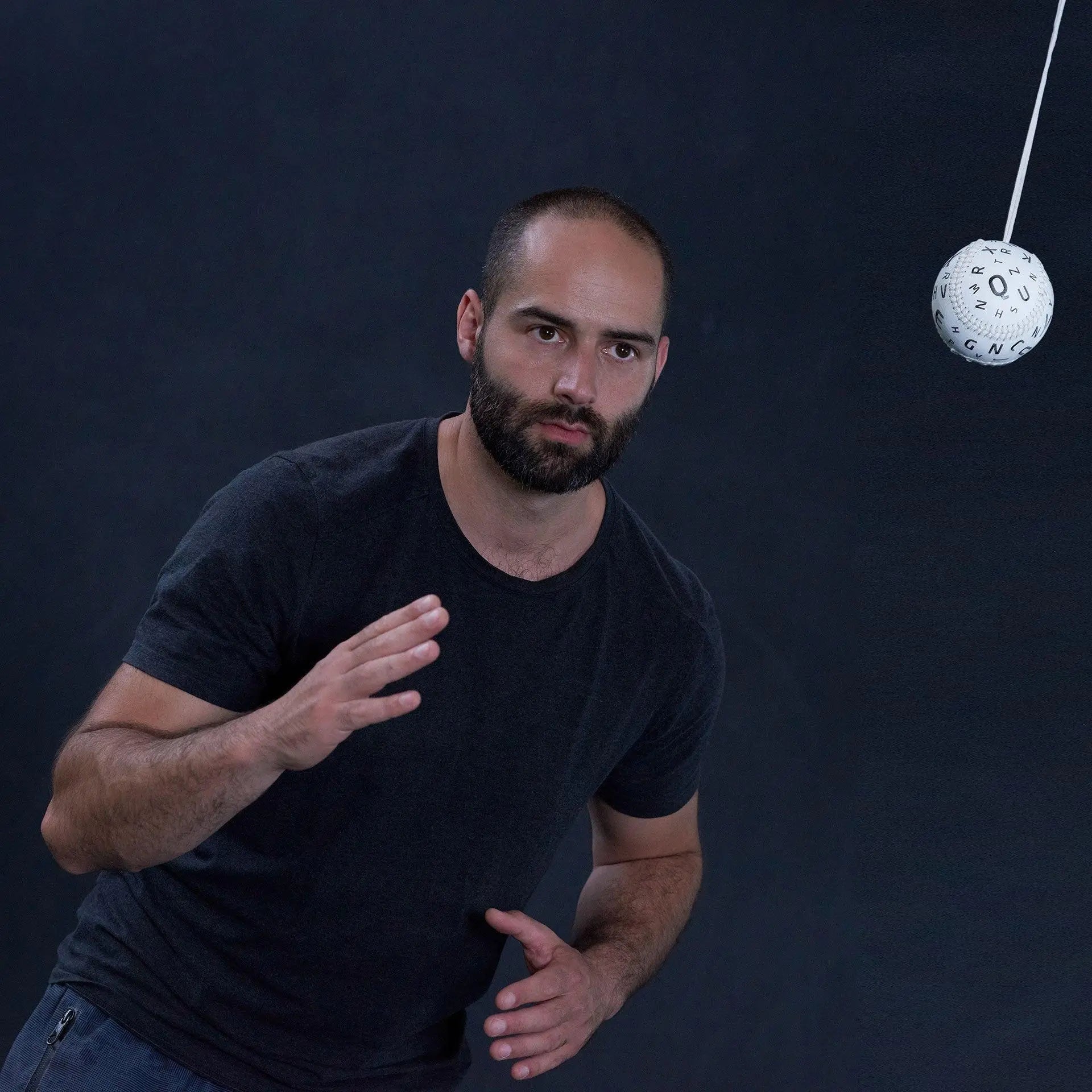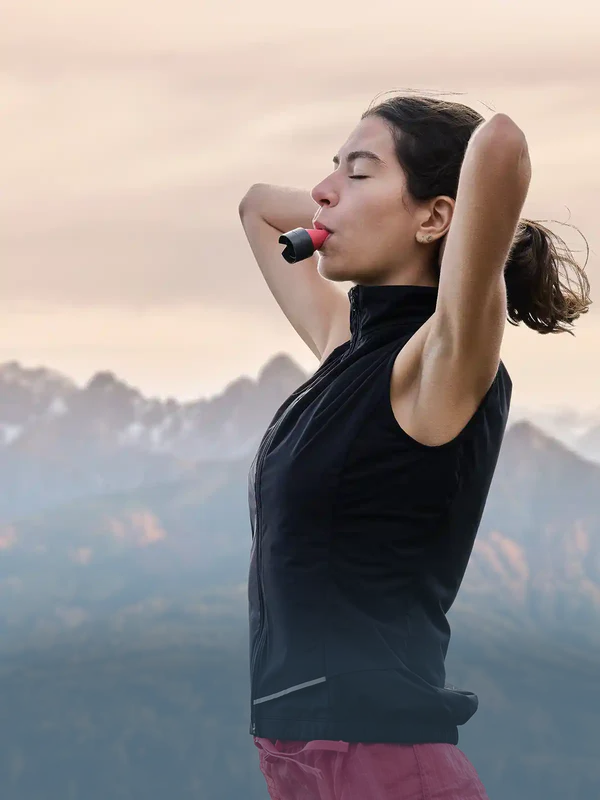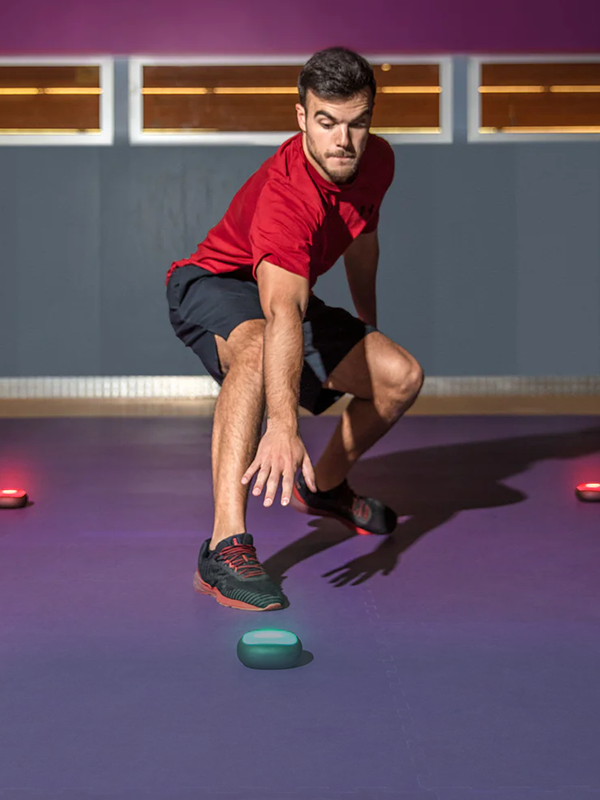Reading time: 3 minutes
Do you have problems reading or working on a screen? Neuroathletic training can help you combat short-sightedness. Neuroathletic trainer Kevin Grafen shows you two simple exercises that you can use to train your eye muscles to strengthen your eyesight and counteract poor vision. The goal: to see better through eye training. All you need is a Brock String.
Contents
Typical symptoms of myopia
Sooner or later, it affects many people: short-sightedness. And almost everyone knows the problems that often occur when eyes become weaker:
- Screen work and reading become more strenuous,
- Letters at a greater distance are no longer clearly recognizable,
- Eyes tire with prolonged concentration,
- Headaches due to eye strain.
In contrast to farsightedness, which makes it harder to see close objects, nearsightedness primarily affects the ability to see clearly into the distance . Some people also have astigmatism or eye diseases such as cataracts. Nearsightedness, also known as myopia , is often caused by an eyeball that is too long, which means that the image of objects further away is blurred on the retina.
In particular, the ability to see distant objects clearly becomes worse because the retina does not receive the image correctly. If you are unsure or have pain (or headaches), then it is better to visit an ophthalmologist - simply to make sure that everything is OK with your eyes.
With these exercises you can improve your eyesight
The good news: regardless of diopters and glasses, you can do something to maintain your eyesight and even improve it. There are methods that can be used to naturally alleviate poor eyesight or short-sightedness. Simple eye exercises and neuroathletic aids make the seemingly impossible possible! Because: The right eye training can bring success with short-sightedness.
Preparation: Do a quick check
So that you can check the "before and after" directly, be sure to take stock beforehand. To do this, simply check your eyesight, i.e. at what distance you can still read the text in a book, for example.
For both neuroathletic exercises against poor eyesight, neuroathletic coach Kevin Grafen uses the so-called Brock cord , on which several colored balls are lined up at equal distances. The cord is attached horizontally away from the body and then held at nose height (see details in the video below).
Exercise 1: Let your eyes "jump"
Important: The string goes to your nose, not your head to the string - this way you stand or sit in a straight position. Now let your eyes "jump": your gaze jumps from the first ball step by step over the other balls to the furthest ball. With your eyes closed, go back to the first ball. Ideally, repeat 5 to 10 times and then do the reading test again.
Exercise 2: The Zipper
For the second neuroathletics exercise with the same "exercise structure", imagine a zipper that you open from the tip of your nose to the end of the Brock cord - (almost) from squinting you go into the distance and thus to the normal eye position. With your eyes closed, go back to the beginning. Ideally, repeat 5 to 10 times and then do the reading test again.
If you feel dizzy or your eyes water or hurt, be sure to take a break!
The goal of these exercises is to activate your eye muscles and train your ability to see distant objects more clearly. This is how you can improve your eyes through exercises .
See better: Neuroathletic training can help
Visual impairment cannot only be corrected with glasses or contact lenses - targeted vision training also offers opportunities for improvement . Neuroathletics comes in right here: with simple exercises such as the "zipper" or the "eye jump" you can actively support your vision . This way you not only train your eye muscles, but also promote convergence, which can contribute to improving your eye health in the long term.
Vision trainers and aids such as the Brock cord help you to perform the exercises correctly and move in the right direction. It is important that you train regularly, blink consciously from time to time and relax your eyes. This way you can counteract your poor vision.


